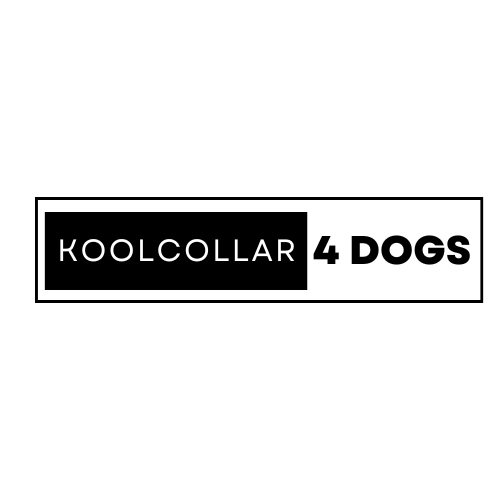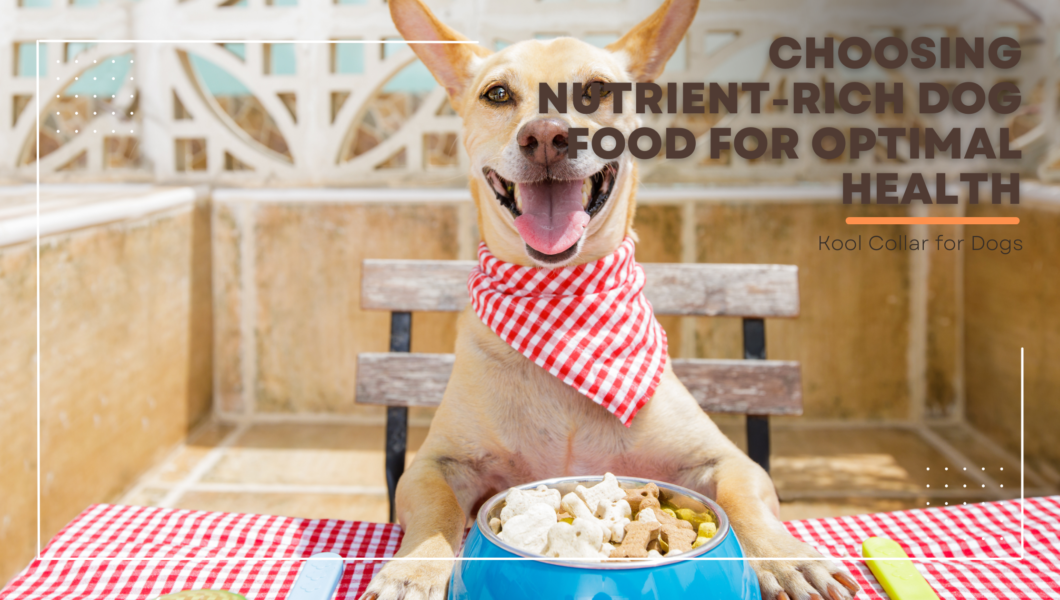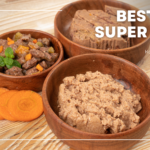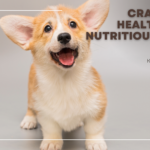Importance of choosing nutrient rich dog food
As a devoted dog parent, ensuring your furry companion’s well-being should be a top priority. One of the most crucial aspects of maintaining your dog’s overall health is providing them with a nutrient-rich diet. Just like humans, dogs require a balanced intake of essential vitamins, minerals, proteins, and other nutrients to thrive. Choosing the right nutrient rich dog food can have a profound impact on your pet’s energy levels, coat condition, digestion, and even longevity.
In this comprehensive guide, we will delve into the world of nutrient-rich dog food, exploring its significance, and identifying the key ingredients to look for. And providing valuable tips to help you make informed decisions for your canine companion’s optimal health.
Also Read Yumwoof vs Sundays
Understanding the nutritional needs of dogs
Before we dive into the specifics of nutrient rich dog food. It’s essential to understand the fundamental nutritional requirements of our furry friends. Dogs are omnivores, meaning they require a balanced diet consisting of proteins, carbohydrates, fats, vitamins, minerals, and water.
- Proteins: Proteins are the building blocks for muscle development, tissue repair, and overall growth. They are crucial for maintaining a strong immune system and healthy skin and coat.
- Carbohydrates: Carbohydrates provide energy and are an essential source of fiber, which aids in digestion and maintains a healthy gut.
- Fats: Fats are a concentrated source of energy and play a vital role in nutrient absorption, skin and coat health, and brain development.
- Vitamins and Minerals: These micronutrients are essential for various bodily functions, including bone development, immune system support, and overall metabolic processes.
- Water: Adequate hydration is crucial for maintaining proper bodily functions, aiding in digestion, and regulating body temperature.
By understanding these fundamental nutritional needs. You can better evaluate the ingredients in dog food and ensure your furry friend is receiving a well-rounded diet.
Common ingredients to look for in nutrient rich dog food
When it comes to choosing nutrient rich dog food, it’s essential to scrutinize the ingredient list carefully. Here are some common ingredients to look for:
- High-Quality Protein Sources: Opt for dog foods that list whole, animal-based proteins as the first ingredient, such as chicken, turkey, beef, or fish. These sources provide essential amino acids for muscle development and maintenance.
- Complex Carbohydrates: Look for whole grains like brown rice, oats, or barley, as they offer fiber, vitamins, and minerals. Avoid dog foods with high levels of simple carbohydrates like corn or wheat. Which can cause spikes in blood sugar levels.
- Healthy Fats: Ingredients like fish oil, flaxseed, or chicken fat provide essential fatty acids. That supports skin and coat health, brain function, and overall wellness.
- Fruits and Vegetables: Nutrient rich dog foods often include a variety of fruits and vegetables. Such as blueberries, spinach, or carrots, which offer antioxidants, vitamins, and fiber.
- Probiotics and Prebiotics: These beneficial bacteria and dietary fibers promote a healthy gut environment, aiding in digestion and nutrient absorption.
By prioritizing these nutrient-dense ingredients. You can ensure your dog receives a balanced and nourishing diet that supports their overall well-being.
Avoiding harmful ingredients in dog food
While identifying beneficial ingredients is crucial. It’s equally important to be aware of potentially harmful substances that may be present in some dog foods. Here are a few ingredients to avoid:
- Artificial Preservatives: Substances like BHA, BHT, and ethoxyquin are often used as preservatives in dog food. But have been linked to potential health risks.
- Artificial Colors and Flavors: These unnecessary additives serve no nutritional purpose and may cause adverse reactions in some dogs.
- By-Products and Meat Meals: While not inherently harmful, these ingredients can be of lower quality. And may contain undesirable parts of the animal, such as feathers, beaks, or hooves.
- Fillers: Ingredients like corn, wheat, or soy are often used as inexpensive fillers in dog food. But provide little nutritional value and can cause digestive issues in some dogs.
By avoiding these potentially harmful ingredient. You can ensure your dog’s diet is free from unnecessary additives and fillers, promoting optimal health and well-being.
Reading and understanding dog food labels
Navigating the world of dog food labels can be a daunting task. But it’s crucial to understand what you’re feeding your furry friend. Here’s a breakdown of the key components to look for on dog food labels:
- Ingredient List: This is arguably the most important section, as it lists the ingredients in descending order by weight. Look for whole, recognizable ingredients at the top of the list.
- Guaranteed Analysis: This section provides the minimum percentages of crude protein, crude fat, crude fiber, and moisture content in the food.
- Nutritional Adequacy Statement: This statement indicates whether the food meets the nutritional requirements established by the Association of American Feed Control Officials (AAFCO) for a specific life stage (e.g., puppy, adult, or senior).
- Feeding Guidelines: These recommendations provide a general guideline for how much to feed your dog based on their weight and activity level.
- Expiration Date: Ensure you check the expiration date to ensure the food is fresh and hasn’t been sitting on the shelf for an extended period.
By carefully reading and understanding dog food labels. You can make informed decisions and choose a nutrient-rich option that aligns with your dog’s specific dietary needs.
Different types of nutrient rich dog food (dry, wet, raw)
Nutrient rich dog food comes in various forms, each with its own unique benefits and considerations. Here’s an overview of the different types:
- Dry Dog Food (Kibble): Dry dog food is a convenient and cost-effective option. It is typically made by combining and cooking various ingredients, then extruding and drying the mixture. Look for high-quality, nutrient-dense kibble with whole, recognizable ingredients.
- Wet (Canned) Dog Food: Wet dog food is known for its moisture content and palatability. It often contains higher levels of protein and fewer carbohydrates compared to dry food. However, it can be more expensive and may have a shorter shelf life once opened.
- Raw Dog Food: Raw dog food diets consist of uncooked, raw meat, bones, organs, and sometimes vegetables. Proponents argue that raw diets mimic a dog’s ancestral diet and provide optimal nutrition. However, proper handling and sourcing of ingredients are crucial to ensure safety.
- Dehydrated or Freeze-Dried Dog Food: These options are made by removing moisture from raw ingredients. Resulting in a shelf-stable product that can be rehydrated before serving. They offer the benefits of raw food in a more convenient and longer-lasting format.
Each type of nutrient-rich dog food has its advantages and considerations. So it’s essential to evaluate your dog’s specific needs, preferences, and your lifestyle to determine the best option.
Read Best Dog Super Food
Choosing the best nutrient-rich dog food for your dog’s age and breed
Just as human nutritional needs vary throughout different life stages, a dog’s dietary requirements also change as they age and based on their breed. Here are some considerations when choosing nutrient-rich dog food for your furry friend:
- Puppies: Puppies require a higher caloric intake and increased levels of protein, calcium, and other nutrients to support their rapid growth and development. Look for puppy-specific formulas with appropriate nutrient levels.
- Adult Dogs: Adult dogs require a balanced diet with moderate levels of protein, fat, and carbohydrates to maintain their energy levels and overall health.
- Senior Dogs: As dogs age, their metabolism slows down, and their nutritional needs change. Senior dog foods often have lower calorie and fat content, along with increased levels of antioxidants and joint support ingredients.
- Breed-Specific Needs: Different dog breeds may have varying dietary requirements based on their size, activity level, and potential breed-related health concerns. For example, large-breed dogs may benefit from formulas designed to support joint health, while smaller breeds may require higher caloric density.
By considering your dog’s age, breed, and specific needs, you can choose a nutrient-rich food that provides the optimal balance of nutrients for their stage of life and overall well-being.
Transitioning to a new dog food brand
Introducing a new dog food brand can be a gradual process, as abrupt dietary changes may cause digestive upset or other issues. Here are some tips for a smooth transition:
- Gradually Introduce the New Food: Start by mixing a small amount of the new food with your dog’s current food, gradually increasing the ratio of new food over a period of 7-10 days.
- Monitor for Digestive Issues: During the transition period, closely observe your dog’s stool and overall digestive health. If you notice any adverse reactions, slow down the transition process or consult with your veterinarian.
- Stay Consistent: Once your dog has fully transitioned to the new food, avoid switching back and forth between brands, as this can lead to digestive issues and nutrient imbalances.
- Adjust Portion Sizes: Different dog foods have varying caloric densities, so you may need to adjust the portion sizes accordingly to maintain your dog’s ideal body condition.
By following a gradual transition process and monitoring your dog’s response, you can minimize digestive upset and ensure a smooth adaptation to the new nutrient rich dog food.
Tips for maintaining a healthy diet for your dog
Choosing a nutrient rich dog food is just the first step in promoting your furry friend’s overall health. Here are some additional tips to help maintain a balanced and nutritious diet for your dog:
- Provide Fresh Water: Ensure your dog always has access to clean, fresh water to support proper hydration and bodily functions.
- Limit Treats and Table Scraps: While occasional treats are fine, excessive treats and table scraps can lead to an imbalanced diet and potential weight issues. Choose healthy, low-calorie treats and limit them to no more than 10% of your dog’s daily caloric intake.
- Exercise Regularly: Regular exercise not only helps maintain a healthy weight but also supports overall health and well-being. Adjust your dog’s caloric intake based on their activity level.
- Monitor Body Condition: Regularly assess your dog’s body condition by feeling their ribs and observing their waistline. Adjust their diet and exercise routine as needed to maintain a healthy weight.
- Consult with Your Veterinarian: If you have concerns about your dog’s diet or health, don’t hesitate to consult with your veterinarian. They can provide personalized advice and recommendations based on your dog’s specific needs.
By following these tips and maintaining a consistent, nutrient rich diet, you can help ensure your furry companion enjoys a long, healthy, and happy life.
Conclusion: Prioritizing your dog’s health with nutrient rich food
Providing your dog with a nutrient rich diet is one of the most significant investments you can make in their overall well-being. By understanding the importance of a balanced and nourishing diet, identifying high-quality ingredients, and avoiding potentially harmful additives, you can make informed decisions that support your furry friend’s optimal health.
Remember, every dog is unique, and their dietary needs may vary based on age, breed, and individual preferences. Consult with your veterinarian, read labels carefully, and be willing to make adjustments as needed to find the perfect nutrient rich dog food that meets your canine companion’s specific requirements.
Prioritizing your dog’s health with a nutrient-rich diet is not only an act of love but also a commitment to ensuring they live their best life, filled with energy, vitality, and countless cherished moments by your side.
If you’re ready to take the next step towards your dog’s optimal health, visit our website and explore our selection of carefully curated, nutrient rich dog food options. Our knowledgeable team is here to guide you in choosing the perfect diet tailored to your furry friend’s unique needs. Don’t wait – prioritize your dog’s well-being today and give them the gift of a nutritious, balanced diet for a lifetime of happiness and health.



